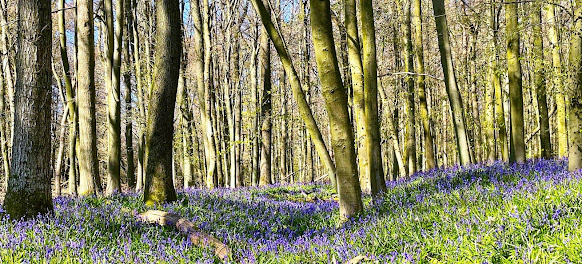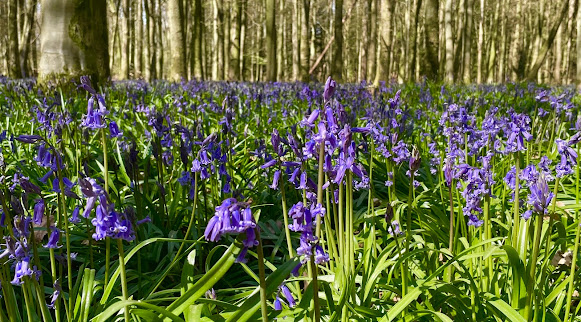"When bluebells ring their bells the wintry gloom dispels."
A sea of bluebells are a highlight of spring. They are native to western Europe, in particular the UK and really are a breathtaking sight when they’re in full bloom. Here are some interesting facts.
- The bluebell has many names: English bluebell, wild hyacinth, wood bell, bell bottle, Lady’s Nightcap and Witches’ Thimbles.
- It is a symbol of humility, constancy, gratitude and everlasting love.
- It is against the law to intentionally pick, uproot or destroy bluebells
- Bluebell colonies take a long time to establish - around 5-7 years from seed to flower.
- They take years to recover after footfall damage. If a bluebell’s leaves are crushed, they die back from lack of food as the leaves cannot photosynthesise.
- All parts of the bluebell plant contain toxic glycocides that are poisonous.
- Ants help to spread bluebell seeds.
Nature has it’s own purpose of meeting a higher requirement through the presence of any ecosystem next to us and the existence of bluebells around is no exception to that...













Nice post...did not expect such vibrant pictures :-) thanks
ReplyDeleteThank you very much!
DeleteThey grow in south Africa too, a parennial during the summer. A beautiful narrative.
ReplyDeleteThank you for the compliment. Glad to know that. :)
DeleteThey look so lovely.. Blue flowers like blue ocean.
ReplyDeleteThanks Bhavana. :)
DeleteThey're just so beautiful, you wouldn't think they're poisonous
ReplyDeleteVery true Ranjini! Even i was surprised to know this fact:)
DeleteLovely pictures :) I live in Belgium and there's a vast forest of Bluebells that flower every spring. Missed it this year as I'm in India.
ReplyDeleteBeautiful post
ReplyDeleteDeepika Sharma
Thank you very much Deepika.
Delete